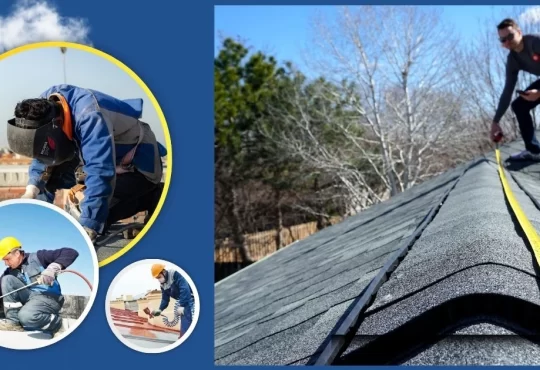Smart home devices have become more than a futuristic trend. It is now an everyday essential for many homeowners who want to save money, simplify routines, and boost convenience. Yet with so many devices on the market, it is easy to get overwhelmed and even easier to overspend on gadgets that do not give meaningful returns. What most people really want to know is which smart home products actually pay for themselves and which ones truly provide long-term value.
Smart home budgeting comes down to choosing tools that reduce recurring expenses, extend appliance lifespans, and improve energy efficiency. The goal is to create an environment where your home works smarter, not harder, and eventually saves you more than you spent upfront. If you are deciding where to invest your money, this guide walks you through the top automation devices with the best return on investment. Along the way, you will find practical examples, real-world scenarios, and a few tips to help you get the most from every purchase.
Why ROI Matters When Building a Smart Home
Smart home technology can sometimes feel like a shopping spree waiting to happen. You might start with a simple smart plug and suddenly find yourself considering a fully automated lighting system, security cameras, a robot that mops your floors, and a fridge that talks back. While the convenience is tempting, not every device offers a real financial benefit.
Focusing on return on investment ensures you build a smart home that functions efficiently without draining your wallet. ROI shows you how effectively a device saves money, protects property, or improves energy use. It is not only about cutting costs. It is also about adding value and reducing waste.

A smart thermostat, for example, may cost more upfront than a traditional one, but it reduces energy consumption every month. Over time, those savings outweigh the initial cost. On the other hand, a voice-controlled toaster might be convenient, but it will probably never pay for itself unless you burn toast for a living.
To keep your smart home budget balanced, focus on products that provide measurable benefits. Think reduced utility bills, lower maintenance costs, and better energy efficiency.
Must-Have Smart Home Devices for Money & Comfort
1. Smart Thermostats
If there is one smart device that consistently delivers impressive returns, it is the smart thermostat. These devices learn your habits, automatically adjust temperatures, and help you avoid wasting energy. Depending on your climate and habits, a smart thermostat can reduce heating and cooling expenses by ten to twenty percent each year.
If you travel often or work irregular hours, a smart thermostat adjusts your home’s temperature to your schedule. It prevents your air conditioning from running unnecessarily while you are away and warms your home only when you are on your way back. This kind of automated efficiency can shave hundreds of dollars off yearly utility bills.
For example, imagine spending $200 on a smart thermostat and saving $20 per month on energy costs. In less than a year, the device has already paid for itself. After that, the remaining savings feel like little monthly rewards for making a smart choice.
Some models also monitor your HVAC system and notify you when filters need replacement or when something seems off. These alerts can prevent costly repairs and prolong the lifespan of your heating and cooling equipment. You get both short-term and long-term advantages.
2. Smart Lighting
Smart lighting might not be the flashiest upgrade, but it is one of the easiest ways to score consistent savings. LED smart bulbs use far less energy than traditional bulbs, and their automated features help eliminate unnecessary electricity use.
With smart lighting, you can schedule lights to turn off automatically at certain times or dim them in the evening to reduce consumption. If you often forget to turn off the lights before leaving the house, motion sensors and occupancy detection can help you break that habit. It is like having a strict but friendly personal assistant who is very committed to saving electricity.
You can start small with a few smart bulbs or upgrade entire fixtures depending on your budget. Even modest setups pay off quickly. LED bulbs already use less power, and smart features maximize their efficiency. When combined with energy-saving routines, these lights can reduce electricity bills by ten to fifteen percent.
Smart lighting is also long-lasting. LED bulbs last significantly longer than incandescent ones, which saves you money on replacements. You get savings on both energy and maintenance, making this one of the highest value upgrades people often overlook.
3. Smart Plugs and Power Strips
Sometimes the best financial decisions are the small ones. Smart plugs do not carry the same wow factor as flashy appliances, but they pack a surprisingly strong ROI. Many devices in your home draw standby power even when they appear off. This phantom load increases your electricity bill without offering any real use.
Smart plugs and power strips completely cut off power to devices. You can schedule them or control them from your phone. They are handy for appliances like TVs, game consoles, printers, and kitchen devices that often stay plugged in.
For instance, a fully automated bright power strip can turn off grouped electronics at night or when you are at work. This simple change can save $10 to $30 per device per year, depending on energy rates. Multiply that across several items, and the savings proliferate.
Since smart plugs are inexpensive, they usually pay for themselves in a few months. They are also ideal for renters who want smart home benefits without making permanent changes.
4. Smart Security Cameras
Security cameras do not always provide direct financial savings, but they still offer a strong ROI through protection and prevention. Smart cameras deter break-ins, help you monitor deliveries, and provide evidence if something goes wrong. That peace of mind can save thousands of dollars in potential losses.
Many homeowners also receive discounts on insurance premiums by installing security cameras or complete innovative security systems. Even a modest discount adds up over the years.
Camera systems can also prevent small issues from becoming expensive ones. For example, if you receive an alert that a gate is open or a package has been delivered, you can take action right away. Some cameras include sensors that detect smoke, water leaks, or unusual activity, helping prevent significant damage.
While security cameras have a higher upfront cost, the long-term protective benefits create a valuable return, especially for those living in busy neighborhoods or properties prone to break-ins or package theft.
5. Smart Locks
Smart locks provide value by reducing the risk of lockouts, lost keys, or break-ins due to duplicate keys. They also offer convenience, saving time and reducing stress. You can unlock your home remotely, grant temporary access to guests, and get notifications when someone enters.
The ROI of smart locks may not always be measured in dollars saved. Instead, it is often found in improved security and reduced risks. The cost of replacing a lost key or calling a locksmith adds up quickly. With a smart lock, those expenses disappear.
For households with kids, housemates, or caregivers, smart locks eliminate the need for spare keys and offer better control over who enters the home. This makes them a smart investment for peace of mind. Since they are durable and low-maintenance, their value increases the longer you use them.
6. Leak Detectors and Smart Water Sensors
Water damage is one of the most expensive home repair issues. A tiny leak can spiral into thousands of dollars in structural damage, mold cleanup, and repair costs. Smart leak detectors help you catch these problems early. They sit quietly under sinks, near washing machines, or beside water heaters and send alerts at the first sign of moisture.
This makes them one of the most cost-effective smart home tools. For a small price, you get protection against significant damage. Even if the sensor alerts you to a small drip that costs fifty dollars to fix, you are saving yourself from repairs that could easily exceed ten thousand dollars if left unnoticed.
Some advanced systems can automatically shut off water lines when they detect leaks. This automatic response minimizes damage even if you are not home. For older houses or vacation homes, this feature alone can feel priceless.
7. Smart Appliances
Smart appliances like refrigerators, washing machines, and dishwashers are becoming increasingly common. While they cost more upfront, they deliver long-term savings through energy efficiency, optimized performance, and lower maintenance needs.
For example, an intelligent washing machine can detect load size, reduce water consumption, and automatically adjust temperature settings. Over the years, these small optimizations have saved hundreds of gallons of water and lowered your electricity bill.
Smart refrigerators track energy use, alert you when doors are left open, and adjust cooling automatically based on internal temperature. These features extend the life of food and reduce energy waste. While a smart refrigerator will not pay for itself overnight, its long lifespan, combined with ongoing savings, gives it a substantial long-term ROI.
Robotic vacuum cleaners also fit into this category. Their ROI comes from time saved and reduced need for deep cleaning services. If you usually pay for professional cleaning twice a month but switch to a robot vacuum that keeps floors consistently maintained, you can cut those costs significantly.
8. Solar Panels and Smart Energy Systems
If you are willing to make a larger investment, solar panels and smart energy management systems deliver some of the highest ROI in home automation. Solar systems can reduce electricity bills dramatically and even generate credit if you feed unused energy back into the grid.
Smart energy systems help you track usage in real time. They identify energy-hungry appliances and suggest adjustments to reduce costs. For example, if your system shows that your water heater consumes too much energy at peak hours, you can schedule heating at less expensive times.
The upfront cost of solar can be intimidating, but the long-term payoff is impressive. Many homeowners recover their investment in five to seven years. After that, the savings continue to grow each year.
9. Smart HVAC Zoning Systems
Smart zoning systems let you independently control temperatures in different parts of your home. Instead of cooling the entire house, you can focus on the rooms you actually use. This reduces energy waste and creates a more comfortable environment.
If you have a large home, zoning can save significant money. The system prevents your HVAC from working harder than needed, reducing wear and tear. Over time, this extends the equipment’s life and lowers repair costs.
For families with different temperature preferences, zoning also avoids thermostat wars. Each zone gets its ideal temperature without affecting the rest of the home.
10. Voice Assistants
Voice assistants like Alexa, Google Assistant, and Siri often serve as the heart of a smart home. While they may not directly save you money, their ROI comes from efficiency. They streamline daily tasks such as turning off lights, adjusting thermostats, creating reminders, or controlling appliances.
This helps you get the most out of your other smart devices. A smart home works best when its systems are connected. Voice assistants make that integration easy and reduce the time you spend managing your household tasks.
They also make it easier to maintain energy-saving routines. For example, you can issue a single command to shut off all lights and electronics before bed. This prevents unnecessary waste and ensures your devices operate at peak efficiency.
Tips for Choosing Smart Devices with Strong ROI
Selecting the right smart home devices is easier when you focus on your goals. Here are some helpful tips to stretch your budget while maximising ROI:
- Start with your biggest expenses. If energy bills are high, invest in thermostats and lighting.
- Avoid impulse buying. Stick to devices that solve real household problems.
- Compare long-term savings, not just upfront costs.
- Choose devices that integrate well with each other.
- Look for products with strong warranties and positive reviews.
- Consider the age of your home and appliances. Older homes benefit more from energy upgrades.
- Take advantage of discounts, bundles, and seasonal sales.
Making Your Smart Home Work for You
There is something incredibly satisfying about upgrading your home in ways that feel both modern and practical. Smart technology does not have to be complicated or drain your savings. When you choose devices with strong ROI, your home becomes a partner in reducing expenses and improving daily routines.
From smart thermostats to leak detectors, the best devices offer a mix of protection, convenience, and long-term savings. By building your system thoughtfully, you create a smart home that not only makes life easier but also pays for itself over time.
The key is matching technology to your lifestyle. A well-planned smart home is not about having the most gadgets. It is about having the right ones. Whether you are just starting or upgrading your current setup, focusing on ROI ensures every device contributes to your comfort, security, and budget.
Invest wisely, keep things simple, and enjoy watching your home do the heavy lifting for you. With the right choices, every month can feel more efficient, more convenient, and more rewarding.





